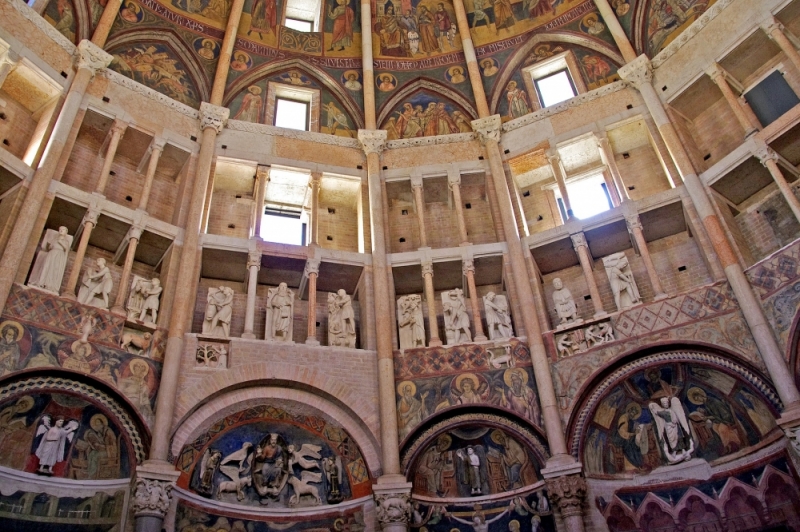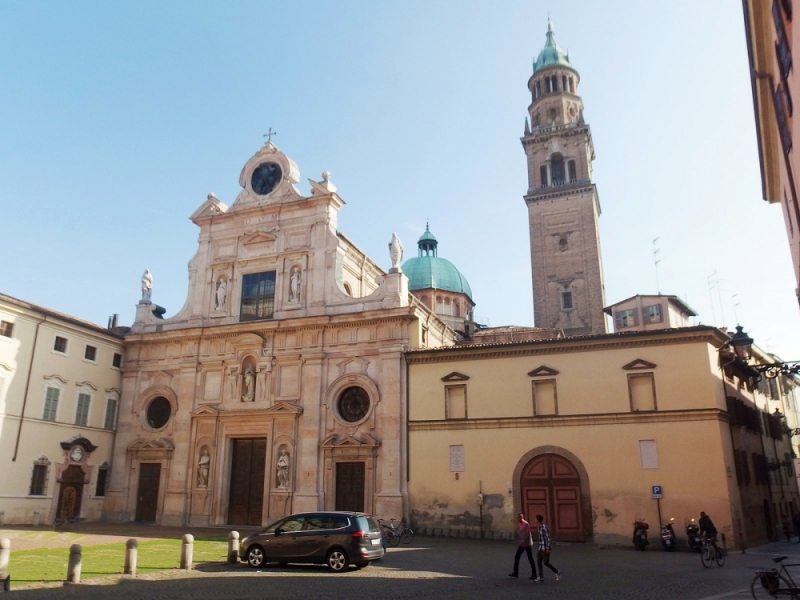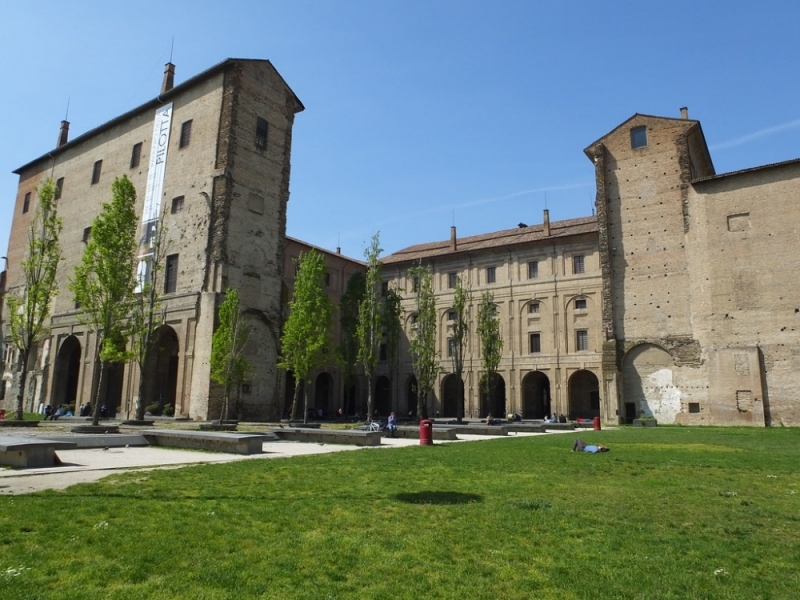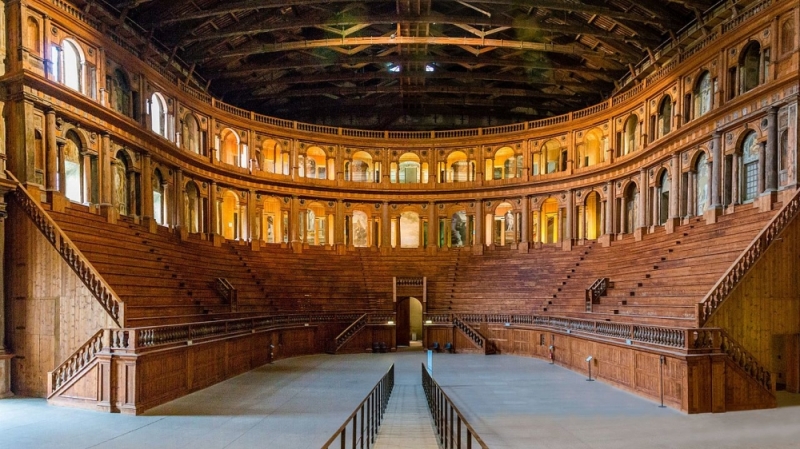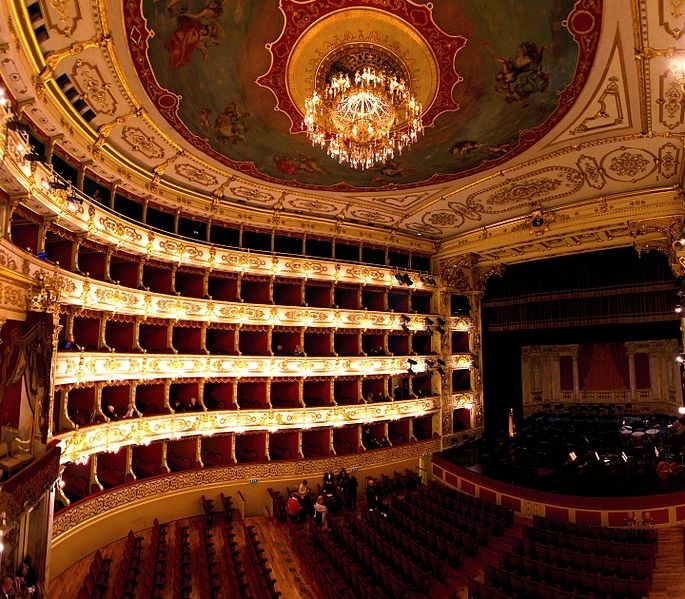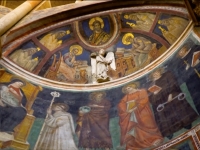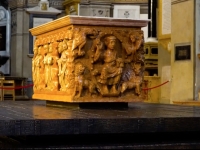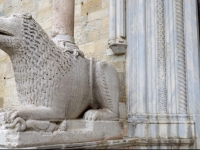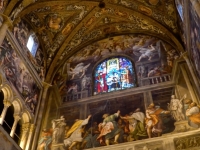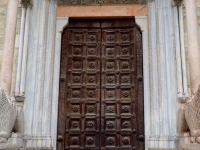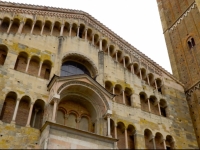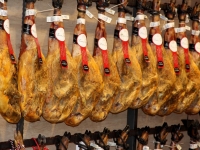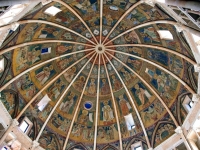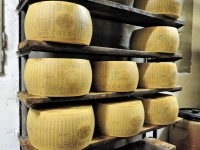Parma and its origins
Parma , a city in Emilia Romagna, was a Roman colony founded in 183 BC and, thanks to its position, was a thriving commercial centre. It was thanks to the lex Rubria (perhaps in 49 BC) that he received Roman citizenship. It was an episcopal seat since the 4th century, but was enormously damaged in the following century by barbarian incursions. It was Tedoric who restored its dignity to it in 553, when the city became the seat of the treasury, under Byzantine domination. It was subsequently, under Lombard domination, that it became the seat of a duchy and county seat, but it was during the Carolingian age that episcopal power emerged. In 1104 Parma was conquered by Countess Matilde of Canossa. Between 1254 and 1259 it was under the lordship of Ghiberto da Gente, who controlled the city magistracies and the general council. The noble power was established in 1303 with Giberto da Correggio, sanctioned by popular acclamation and then by the concession of the imperial vicariate in 1310. Following the death of Henry VII, Giberto attempted to found a Parma state, but the attempt failed due to the Visconti. There was a short period of municipal freedom, until in 1322 the Rossi family took over the city and handed it over to the church. From that moment on, various lordships followed one another, up to Luchino Visconti, who gave a strong boost to the city by improving the economic situation of the city, as well as the artistic and architectural one. After being ceded to the French, to the church, again to the French and later to the church, until the duchy was created in 1545 and it lost all political power, Piacenza being the capital. It was thanks to the Farnese family that it became a residential city and was among the major centers of culture in Europe. During the War of the Polish Succession, the Franco-Piedmontese of General François de Franquetot de Coigny defeated the imperial army in 1734. In 1814 Napoleonic troops took over the city but it was under the government of Maria Luisa of Habsburg (1815- 47) that Parma had an economic rise. In 1875 Luigi Carlo Farini was elected dictator and in the plebiscite of 1860 the city was incorporated into Italy.
What see
We advise you to start your tour from Piazza del Duomo. Nearby is the Palazzo della Pilotta, where you can visit two masterpieces: the Farnese Theater and the National Gallery, which houses works by Angelico, Da Vinci, Guercino, El Greco, Tintoretto, Tiepolo, Van Dick . We cannot omit Correggio, who painted the dome of the Cathedral and the Monastery of San Giovanni and Parmigianino, who, by dint of seeking perfection in the frescoes of Santa Maria della Steccata, became mad.
Duomo and Baptistery
The Duomo represents a model of Lombard Romanesque, and thanks to its long history, it contains different artistic forms. Since the beginning of its construction dating back to 1100, it has undergone continuous changes over the centuries, to today represent a fusion of various styles. In 1526 Correggio created frescoes in the dome inspired by the assumption of the Virgin. In the square there is also the Baptistery, built by Benedetto Antelami at the end of 1100. The exterior is in pink Verona marble, octagonal in shape and decorated with a zoophorus, a series of seventy-five bas-relief carved panels and representing both human and real animals and fantastic. The entire external façade is a story in images: the life of Jesus and Mary, the life of the Baptist, death and resurrection, while the decorations inside describe how Jerusalem was after the end of the world, with apostles and evangelists . In the square there is also the Bishop's Palace , today a bishop's seat and of the Diocesan Museum.
What see
Not to be missed is the Monastery of San Giovanni Evangelista , which includes the church, the convent and the Antica Spezieria di San Giovanni. Much of the church was frescoed by Correggio, who reached his artistic peak, precisely with the decoration of the dome: through a play of perspectives he realizes an open sky where the apostles are lying with the image of Christ in the center. From the outside it is possible to access the Monastery with four cloisters and the beautiful Spezieria (or pharmacy) of San Giovanni. Visiting the first room, called "del Fuoco", the scales weighing the ingredients are still present. In the second room, called the Mortai, herbs and minerals were prepared. The third room, known as the Hall of the Sirens, contains medical publications, while the fourth (of the well and the Alambicchi) was the laboratory's headquarters. The history of the Basilica of Santa Maria della Steccata dates back to 1300, when the image of a breast-feeding Madonna appeared on the facade of the oratory. It was the object of devotion by so many faithful, that it was necessary to build a fence, and it is from this event that the church took the name of Santa Maria della Steccata. In 1500 a sanctuary was built to protect the image, and the dome was built by the young architect Antonio da Sangallo. Inside the basilica, stop to admire the under-arch of the dome, frescoed by Parmigianino, before his madness: there are The Wise Virgins and the Foolish Virgins. According to the parable where Jesus tells of the ten virgins, all ten awaited the arrival of the groom, but only five brought the sufficient amount of oil. When the groom arrived, the foolish virgins went to buy the oil, while the wise ones, who had brought enough oil, were able to enter the party.
What see
The Palazzo della Pilotta is a monumental complex whose construction, by Ottavio Farnese, dates back to 1583 and was created to become an appendix to the nearby Palazzo Ducale. A "Corridor" was built first for connection to a courtyard where the soldiers used to play "Pelota". At this point other spaces were added later, in order to house the Farnese collection of books and works of art. Today inside the palace there are the National Archaeological Museum, the Farnese Theater, the Palatine Library, the National Gallery and the Bodonian Museum. The National Gallery of Parma exhibits a collection of works reduced compared to the past, since the last descendant, King Charles of Bourbon, transferred it to Naples. The current collection presents works by Beato Angelico, Correggio, Parmigianino, Leonardo, Cima da Conegliano, Sebastiano del Piombo and many others.
Farnese Theater
The Farnese Theater was built between 1616 and 1618 by order of Ranuccio I, 4th Duke of Parma and Piacenza (1593-1622), who wanted to celebrate the stay of Cosimo II de 'Medici in Parma. The event had great political importance for Ranuccio, as it allowed him to consolidate relations with the Medici family and show the grandeur of the Farnese family. In 1617 Ferrara architect Giovan Battista Aleotti was invited to Parma, who was already an expert on the subject, as he had built the Teatro degli Intrepidi in Ferrara in 1605. It was a great innovation for the time: the stage was mobile and the characters could be lowered from above. In 1944 it was destroyed by a bomb, but it was rebuilt in the 1950s according to the original plan. Inside the Monastery of San Paolo in Parma there is the Chamber of San Paolo or the room of the Abbess, which was frescoed by Correggio in 1519 and represents today a true masterpiece of the Italian Renaissance. The abbess is Giovanna da Piacenza, a highly cultured woman who invited numerous artists to Parma. Correggio created an illusionistic effect, in fact the room has an almost cubic shape with a late-Gothic structure, a pergola intertwining fronds and wicker in which we find putti, Diana, ram's heads and mythological figures.
What see
The Teatro Regio di Parma is the temple of music both in Italy and in the world. In fact, Parma is known as a city of music, and also for its music critics, quite critical. In fact, when Vincenzo Bellini brought La Zaira to the stage, he was filled with boos. Located in Piazza Garibaldi, there is the Governor's Palace, a place of modern and contemporary art and if you control its programming, you can attend fantastic exhibitions. Especially recommended for families (but not only), is the Castle of the Puppets of Parma , a magnificent museum which also collects pieces of art from the collection of Giordano Ferrari. If you love walking in the countryside, take a trip to the Parco Ducale , commissioned by Duke Ottavio Farnese. Walking you can reach the Palazzo del Giardino, the Tempietto d'Arcadia or the Palazzetto Eucherio Sanvitale . You can also enjoy a picnic with a typical sandwich with bread, parmesan, ham and a drizzle of olive oil. If you can afford a day trip, we recommend that you spend a day in Brescello , in the province of Reggio Emilia. It was made famous by the film Don Camillo and Peppone, to which a museum was also dedicated.
Movida and entertainment
If you want to enjoy the city in the evening, just wander around the central streets of the city, where the nightlife is concentrated. In via Farina, in particular, you will find numerous bars and restaurants: you can leave from the Spritz and enjoy an aperitif and then have dinner at some small restaurant. If you like cocktails, try Nottingham Forest, where you can sample cocktails prepared with unusual ingredients in an intimate atmosphere.
Parmesans usually meet for an aperitif, and there are in fact many places to enjoy an aperitif:
There is the Tabarro in the center, where you will find a good selection of wines, craft beers and spirits. There is also the Enoteca Fontana where you can drink a good glass of wine accompanied by canapés, stuffed buns and cutting boards. If you want to treat yourself to a cheap but still tasty aperitif, go to Kikko. You will find many students off and on, and also the restaurant presents a new craft beer to try each week. From red shadows the decor is a mix between rustic and modern and is a meeting point for wine lovers. In addition to the tasty cutting boards, you can also order tapas.Pepèn is the right place for those who love sandwiches and street food, in fact entering this small and informal restaurant, you can try a very good aperitif. Recently opened, bistro bubbles is a pretty room divided over three floors, and inside you can find over 300 labels of wines. From Highlander Pub every Friday, from 18:00 to 21:00 a special aperitif-tasting is organized, in which beers are offered every week from different style. In the Roman Degusteria you will be captivated by the hams hanging from the ceiling and from a rustic environment: in fact in this place you can taste the real local salami. For the most refined there is the Shakespeare café, in which you will also be accompanied by live music evenings and dj sets. In addition to cutting boards, you can enjoy pasta. At Arte e Gusto you can try the classic buffet aperitif. It is also the ideal place to celebrate events or birthdays. If after the aperitif you went hungry, there are numerous restaurants offering local cuisine, such as the Osteria del Teatro, the Salumeria Garibaldi, the Angiol D'Or restaurant, the Rigoletto trattoria and many others.
Climate, curiosity and advice
Climate: In Parma the climate is typically continental: the summers are hot and muggy with daytime temperatures of almost 30 ° with thunderstorms even strong on the low plain. Winters are very harsh with minimum temperatures often below zero. Snowfall is very frequent, especially in the Apennines. In Autumn the phenomenon of fog is frequent and the wettest month is October.
Curiosity: Parma will be the capital of culture in 2020. Through this appointment the city will be relaunched as a center of tourist and cultural attraction of the country and will be a city of art and culture.
Advice: if you visit Parma, we suggest you try its typical products, including Parma ham and Parmigiano-Reggiano, or maybe give yourself some gastronomic tours.


